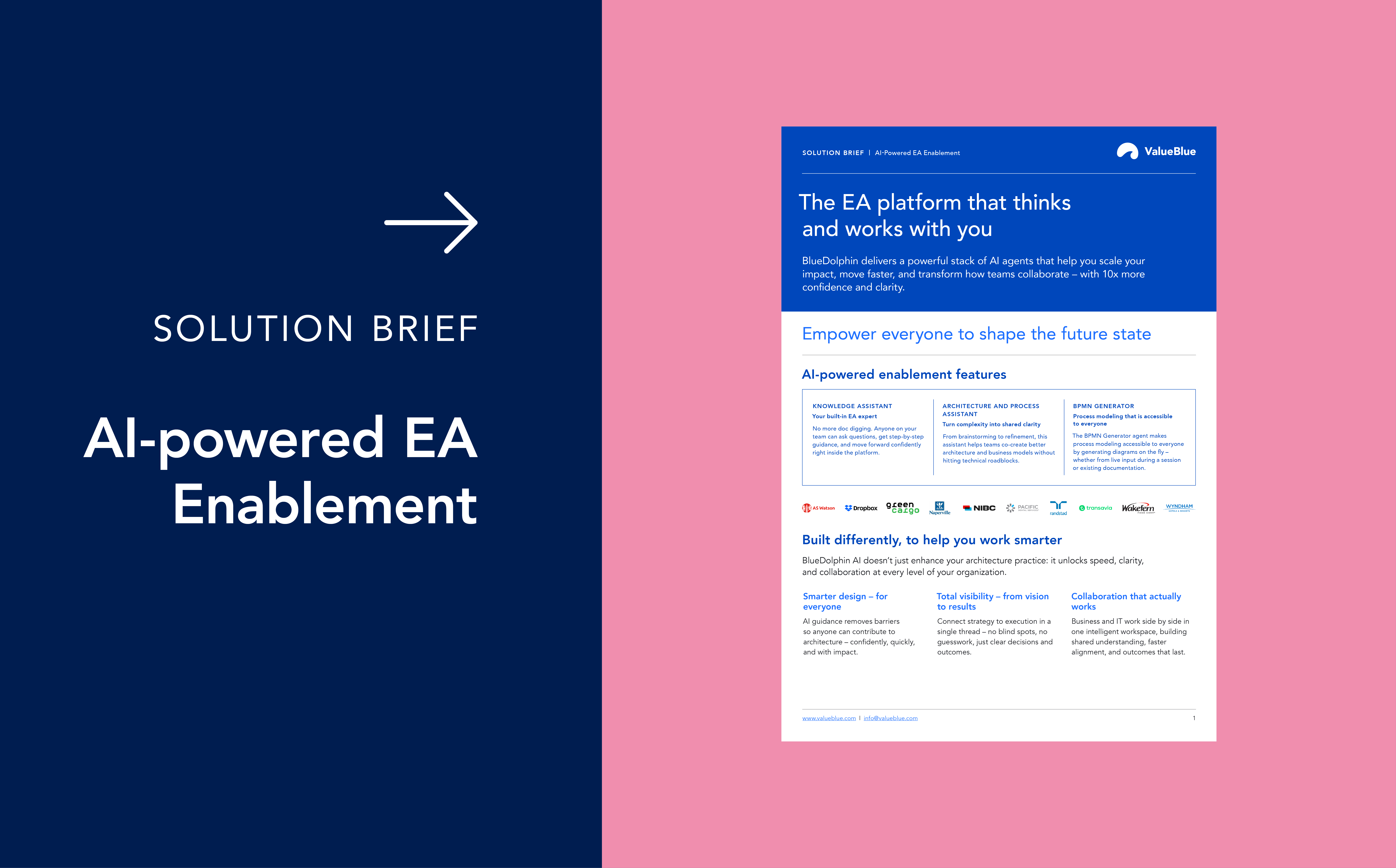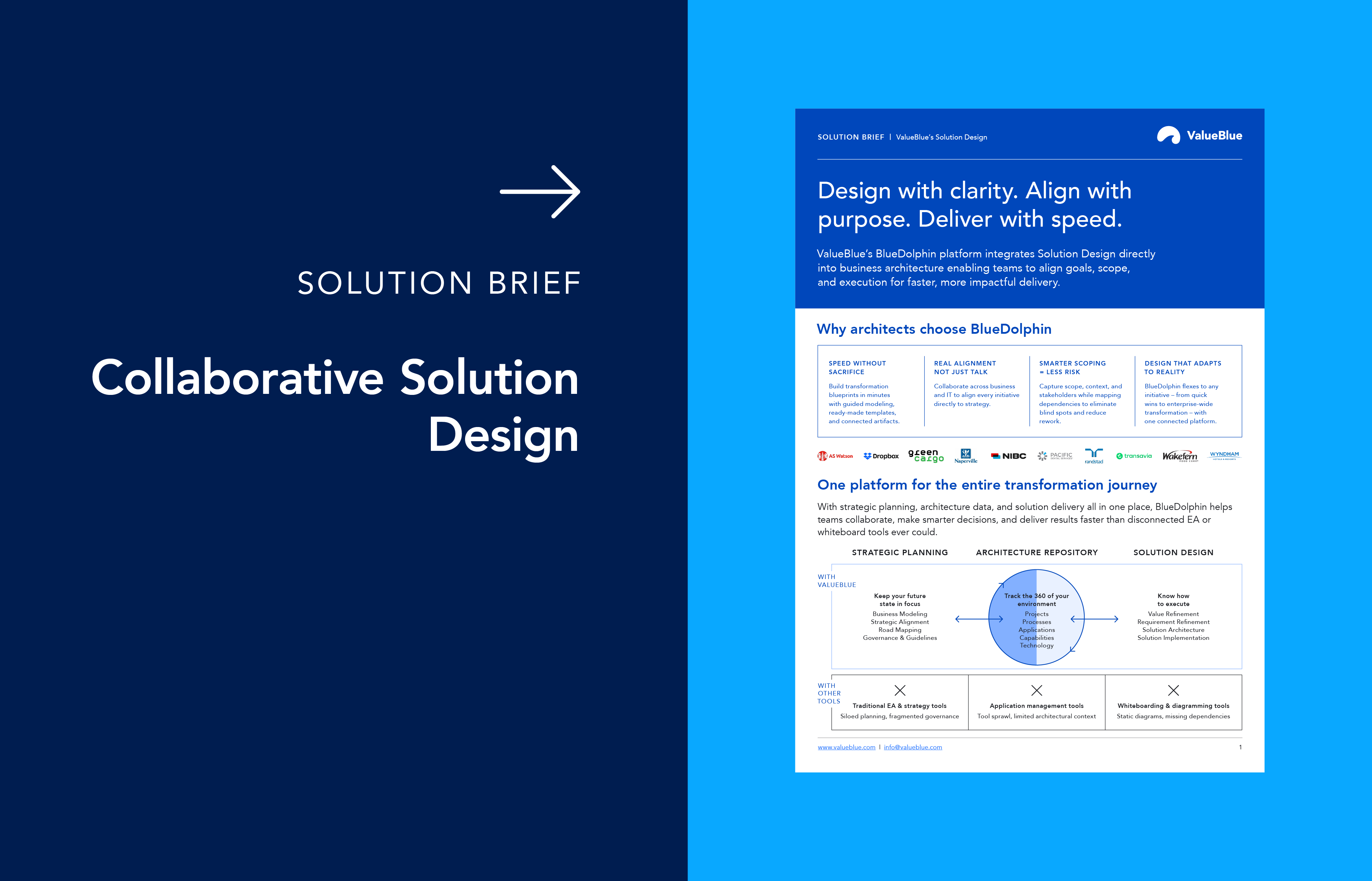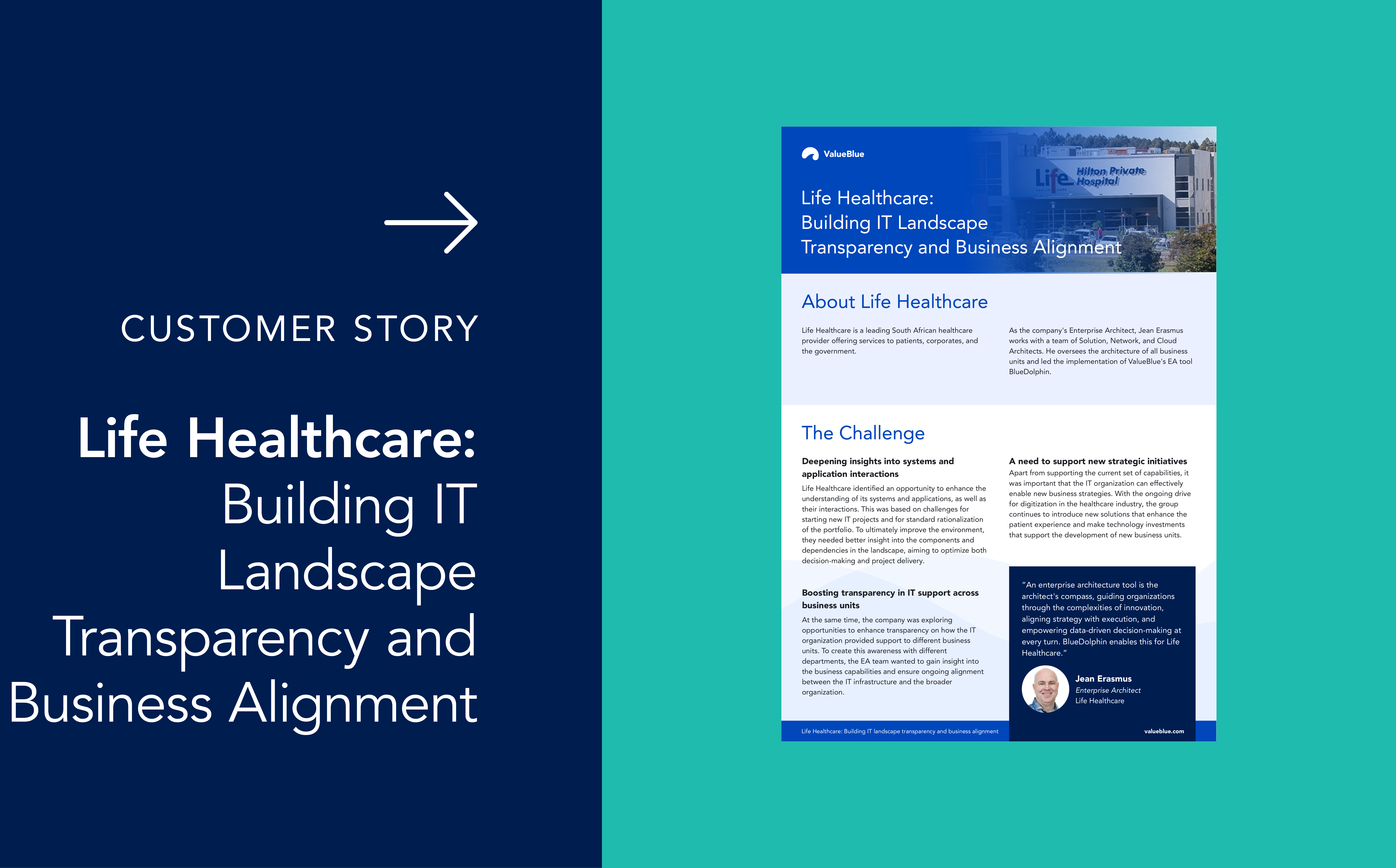9 Ways Enterprise Architecture is Revolutionizing Healthcare
Healthcare is under constant pressure to evolve due to the growing complexity that results from the amount of medical data, as well as cybersecurity and compliance requirements. Fragmented IT systems, outdated technology, and disconnected departments make it hard to deliver consistent, high-quality care. These issues raise costs and make it harder for healthcare providers to meet new needs and technologies.
Enterprise Architecture (EA) offers a strategic solution by aligning business goals with IT capabilities. It helps break down silos, modernize outdated systems, and build a unified digital ecosystem. EA empowers healthcare organizations to improve decision-making, drive innovation, and enhance patient outcomes.
Here are nine key ways Enterprise Architecture streamlines the future of healthcare:
1. Enhancing interoperability across systems
Interoperability is a longstanding issue in healthcare, where patient data is often trapped in isolated systems across different hospitals, clinics, and departments. This fragmentation makes it challenging to deliver appropriate care and wastes critical time in decision-making. Enterprise Architecture introduces standardized integration frameworks, such as Fast Healthcare Interoperability Resources (FHIR), that enable data exchange between systems.
For example, an EA-led initiative might involve aligning all hospital departments to a standard patient data model, ensuring that clinicians and administrators access consistent and accurate information. The result is a more coordinated patient experience and fewer errors due to miscommunication.
2. Optimizing data management
Healthcare organizations process immense amounts of data. It includes everything from clinical records and imaging systems to administrative databases and IoT medical devices. Managing this information is not just about storage – it’s about making the data usable and valuable.
Enterprise Architecture allows for the design of centralized, governed data architectures that support real-time access, analytics, and regulatory compliance. By identifying how data flows through the system, EA helps reduce redundancy, eliminate silos, and improve decision-making. Data becomes a strategic asset rather than a burden.
3. Addressing legacy system challenges
Many healthcare providers still rely on outdated IT systems that were never designed to scale. These systems limit the ability to adopt modern digital tools and are expensive to maintain.
Enterprise Architecture provides a roadmap for assessing, replacing, or integrating these systems. For example, an organization might use EA to analyze which components of an old patient management system can be retained, which need updating, and which should be replaced entirely. By tackling technical debt in a structured way, Enterprise Architecture reduces risk and supports smoother digital transformation.
4. Driving digital transformation
Digital transformation in healthcare is not only about adopting new tools – it’s about rethinking how care is delivered and supported through technology. Enterprise Architecture ensures that digital initiatives are aligned with business goals and priorities.
Whether implementing telehealth platforms, AI diagnostics, or cloud-based infrastructure, EA helps map these technologies to strategic objectives. This ensures that investments deliver value, and that all systems are integrated, secure, and scalable.
5. Improving patient experience
Patients expect convenient, personalized, and connected care experiences. From online appointment booking to digital health records access, the patient journey becomes more and more digital.
Enterprise Architecture enables healthcare organizations to integrate patient-facing applications and ensure they connect seamlessly with backend systems. By providing a full view of the patient's journey, EA helps organizations spot bottlenecks, eliminate duplication, and improve satisfaction. This leads to shorter wait times, fewer repeat visits, and better outcomes.
Want to see how this works in practice? Book a short BlueDolphin demo.
Learn how you can use Enterprise Architecture in your healthcare organization.
6. Facilitating strategic decision-making
There are often complex decisions about staffing, budgeting, IT investments, and care delivery models in healthcare. Without a unified view of operations, these decisions are often uninformed or based on incomplete information.
Enterprise Architecture gives executives a clear view of the organization’s capabilities, systems, and workflows. This clarity helps leadership make better, faster decisions about where to invest, what to prioritize, and how to respond to change, whether it’s a policy shift, new regulation, or a global health crisis.
7. Supporting value-based care models
Healthcare organizations must focus more on outcomes, efficiency, and patient satisfaction. This requires good coordination across departments and data-informed decision making.
Enterprise Architecture enables this transition by aligning clinical, financial, and operational systems around shared goals. For example, EA can help map out how patient data should flow between providers and payers, ensuring everyone works from the same source of truth and can track care quality effectively.
8. Enhancing security and compliance
Security breaches in healthcare are not just financially devastating but also negatively affect patient trust. With regulations like HIPAA (Health Insurance Portability and Accountability Act), GDPR (General Data Protection Regulation), compliance is both mandatory and complex.
Enterprise Architecture supports security by embedding risk and compliance considerations into the architectural framework. It helps identify vulnerabilities, ensure data encryption policies are enforced, and define access controls. More importantly, it creates a consistent governance model across the enterprise, so nothing is left to chance.
9. Enabling regional healthcare integration
Healthcare doesn’t stop at the walls of a single facility. Patients often move between providers, making continuity of care a challenge. Enterprise Architecture enables regional or even national healthcare integration by providing a common framework for data sharing and process alignment.
By mapping data flows and aligning workflows across hospitals, clinics, and community-care providers, EA ensures that patient records, care pathways, and resource plans remain consistent as individuals move through the system.
Real-world impact in healthcare
Here is how Enterprise Architecture is already delivering measurable impact in healthcare:
1. Life Healthcare, one of South Africa’s largest private hospital groups, adopted Enterprise Architecture to gain deeper visibility into its IT environment. With dozens of facilities and diverse digital systems in place, the organization needed a way to align its business objectives with its IT infrastructure. EA enabled them to map systems to business capabilities, identify redundancies, and support more efficient project delivery. This clarity improved collaboration across departments and helped ensure consistent, high-quality patient experiences throughout the network.
2. In the United States, Pacific Dental Services (PDS), a rapidly growing dental support organization, leveraged Enterprise Architecture to gain control over its expanding application landscape. As the company scaled, managing and rationalizing software tools across hundreds of supported practices became complex. By applying EA principles, PDS was able to streamline its business process workflows, improve IT governance, and support readiness for ISO certification. These efforts enhanced operational efficiency and created a scalable framework for future innovation.
Building a smarter, connected future for healthcare
Enterprise Architecture empowers healthcare organizations to modernize, adapt, and thrive in an increasingly complex environment. From tackling legacy systems and enhancing interoperability to driving patient-centered innovation, EA offers a holistic framework that aligns technology with mission-critical goals.
The result is a smarter, more connected, and more resilient healthcare system – one that’s ready to meet the challenges of today and the possibilities of tomorrow.
To see how Enterprise Architecture tool BlueDolphin can help your organization streamline systems, improve care delivery, and support strategic change. Schedule a demo today.
Book a demo
Want to discover how our tool can further enhance your Enterprise Architecture? Fill in the form!
Not ready for a demo yet?
Let’s discuss how BlueDolphin fits your organization’s needs.





